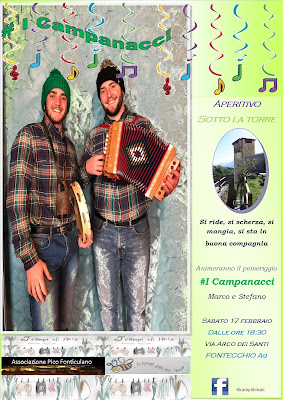These days spent running behind the clocks hand that don't even ticking as they once did letting us completely lose track of the passing time, but once how the hours counted?
Certainly not how we do it.
Once upon a time there was Italic hour, marked by a clock face that contained 6 Roman numbers and a hand. The day was divided into 4 quarters and, the zero hour, the twenty-fourth hour coincided with the sunset. Yes, the day began after sunset, at six pm (in summer, at five in winter), the night belonged entirely to the next day. This is because the days were slower, all the work and people daily life followed the rhythm of the seasons and day and night.
This curious ways of counting the hours causes the same hour marked 4 different hours depending on the time of day that we lived, then the number 6, for exemple, marked noon, midnight, six a.m., six p.m., but this only if we want to give him a modern meaning because for our great-grandparents it didn't not make sense to say it's eight o'clock or it's midnight. There was "the touch" that coincided with the lunchtime that is one p.m.; "first hour" marked the sunrise, actually six in the morning; nine o'clock a.m. were called " the third hour"; three o'clock p.m. " the ninth hour" and so on until you return to the "vespers", six p.m. at sunset. This last bell was the one to which more attention because it warned the closure of the doors of the country and those who worked outside the walls had to prepare to return.
There are still some common saying handed down by our ancestors (in Italy at least) like, for example, "bring the hat to twenty-three hour" meaning a hat with a slightly tilted visor to shelter from the rays of the sun that was about to set, at the twenty-third hour precisely, five p.m., or "you did it like three hours at night" meaning a dirty person like the deeply night, midnight we would say today.
All this complicated (for us) count of hours continued until the late 1600s beginning of the 1700s when the "French" time established by Napoleon took its place.
Many clocks were replaced and those at six hours became rarity. Very few are still working and, among these, in Abruzzo it's famous that of Fontecchio, a medieval village in the province of L'Aquila (Abruzzo), located on the tower at the entrance door of it.
Curiosity, for those wishing to deepen the subject, the study of hours calculation is called "gnomonic" from "gnomone" Greek verb that means indicator: the stick planted on the ground to measure the projection of the shadow and establish the movement of the sun.
If you are curious to see the gear from life and understand how it works, theFontecchio clock tower is open on Saturdays and Sundays in all seasons.
This article, wrote by me, was published in "Abruzzo Forte e gentile" blog




































